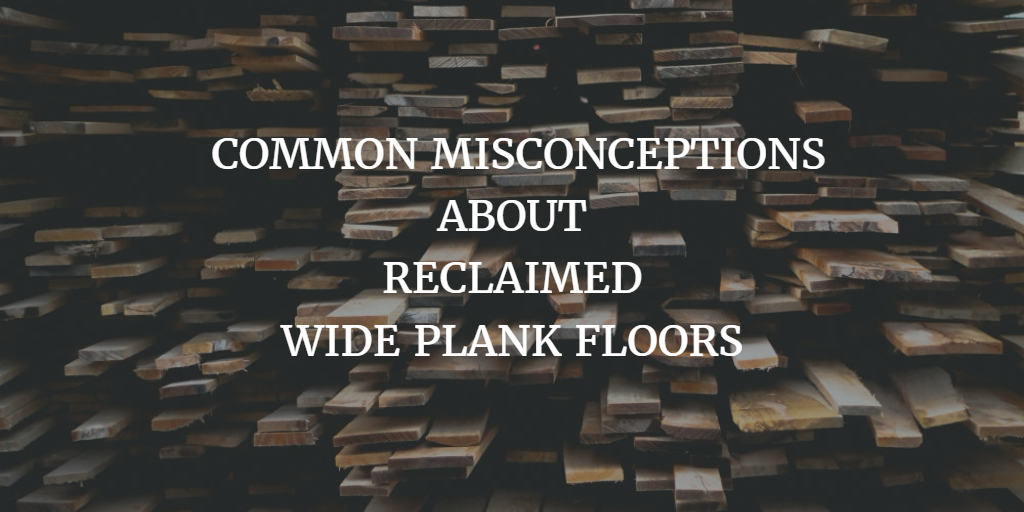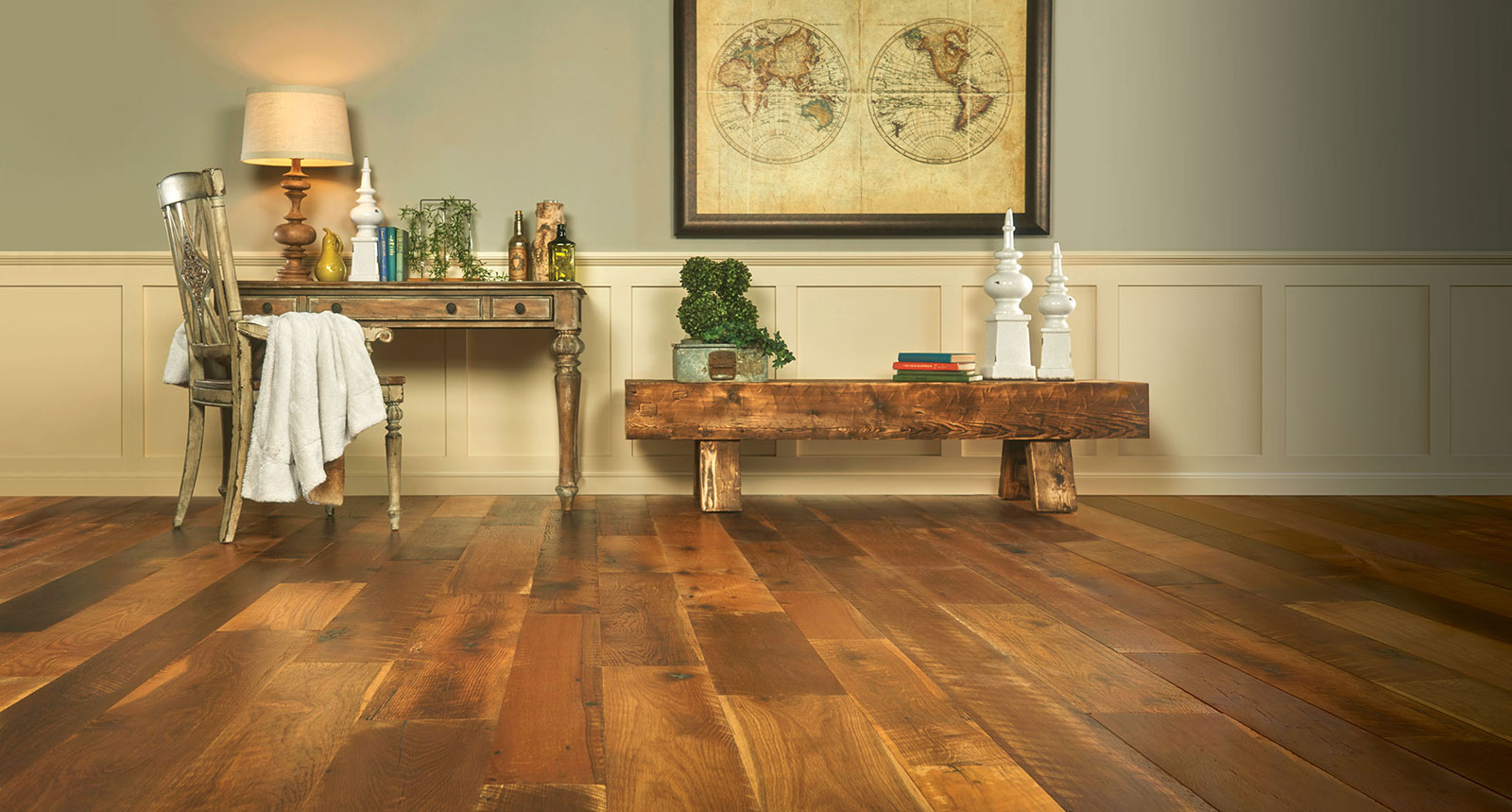
We’d like to address some FAQs and misconceptions we frequently encounter about wide plank hardwood floors. We see these questions and misconceptions come up again and again from interior designers and homeowners alike, so perhaps you’ll find some of your questions answered here!
Here are the five most common misconceptions and questions about wide plank floors:
Is reclaimed flooring cheaper than traditional flooring?
There’s a very common misconception is that it’s cheaper if it’s reclaimed, since it’s essentially just recycled wood.
But just the fact that the wood is reclaimed doesn’t mean it’s cheaper. There’s a process behind creating floors from reclaimed wood. We have to do a lot before the wood is actually viable enough to be used for flooring. Reclaimed flooring is sometimes even more expensive than traditional wide plank floors.
Our process of turning reclaimed wood into wide plank floors looks like this:
- We find the source of the lumber. Usually this is a barn, an old manufacturing facility or an industrial location.
- Some of this wood used to be part of beams, ceiling joists, or other elements of a structure, so we have to be careful about removing any scraps of metal that might be present. After we get ahold of the wood and send it to the mill, any nails or other foreign objects — anything that you wouldn’t want in the end product — are removed. If any metal is left in the wood, it could damage our machines at the mill or the equipment used by the contractor who ends up working with the end product, so this step is vital.
- We square the wood so it’s the right shape to use as flooring.
- All wood is then kiln-dried for added stability.
- Each plank is meticulously hand-inspected by a professional. Any defects are marked to ensure that you receive only the highest-quality planks for your project, and to guarantee that each plank is consistent with its grade.
- Unlike with other mills, all of our flooring is also end-matched regardless of width. This provides the most stable board joint for decades to come.
Click here to read more about what goes into creating our wide plank hardwood floors.
This process is intense and expensive, which is why reclaimed wide plank floors can actually be more pricey than traditional wide plank floors, at $7+/square foot.
Do you have to install reclaimed floors differently or take certain precautions when installing a reclaimed wide plank floor?
No. As is the case with other types of wide plank floors, reclaimed hardwood floors come in solid, engineered, and prefinished varieties. Depending on the type, they can be glued or nailed down, just as the case with traditional wide plank floors.
Is reclaimed flooring less dimensionally stable than traditional wide plank floors?

Are engineered, reclaimed wide plank floors lower quality than solid reclaimed floors?
Not ours! There’s a common misconception that engineered hardwood floors in general are lower quality than solid hardwood floors. This is because when you go to the big box stores, the engineered floors you see usually have a very thin wear layer. Our products have a much heavier wear layer. The wear layer on our engineered wide plank floors are 4 mm, just under the depth of the typical wear layer on a solid hardwood floor.
The fact that our products are built on Baltic birch plywood (as opposed to poplar, fir, pine, and other less expensive options) and the fact that our floors are made up of balanced boards further contributes to their quality and appeal.
How do you source your reclaimed wood floors?
Our reclaimed wood is salvaged from a variety of sources, primarily barns and industrial buildings being demolished. These structures were often built with materials harvested from virgin forests, and the woods show beautiful tight growth rings, rich patina, and character from previous use.
We also work on occasion with materials salvaged from other interesting sources; water tanks, wine vats, shipping crates, and rafts used in the logging industry are a few examples.
Regardless of their original source, all of our wide plank hardwood floors are rigorously inspected for quality assurance.
